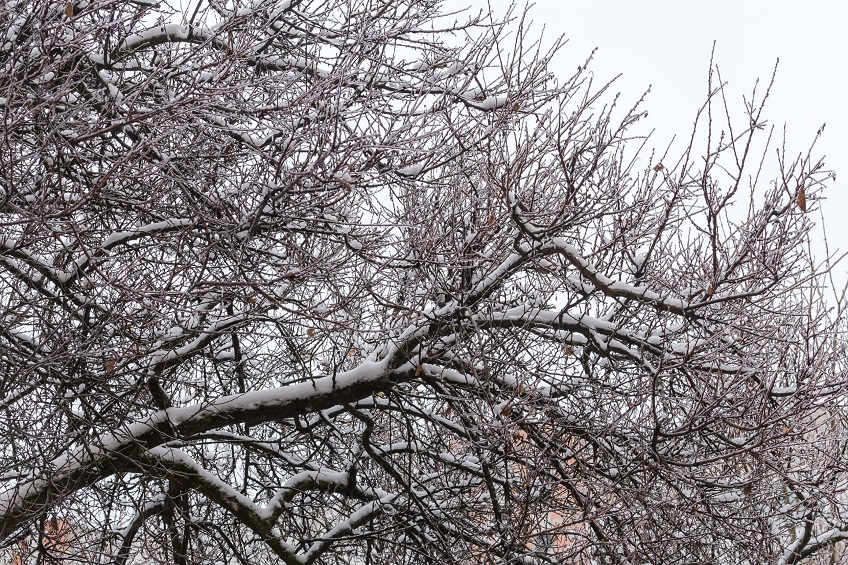
The cold hits and we all throw on extra layers of clothing. But what does a tree do when the cold strikes? They don’t have a winter coat, yet they are able to live through harsh winters year after year. It’s very rare for a tree to freeze to death, and this blog is here to explain why that is.
Trees usually don’t freeze to death, but there is a freezing process that happens underneath the bark. About half of a tree’s weight is water, therefore when temps dip low enough, that water does freeze. But trees have something crafty up their sleeves. There is a bit of work they do to prevent the water in their cells from freezing. Many trees start to freeze when temperatures hit about 20-30 degrees Fahrenheit. This temperature varies a little based on the species of tree, location, and the size. Utah winters get much colder than 20-30 degrees, but our trees are okay if they can keep their cells from freezing.
In the winter, trees go into their own type of hibernation called dormancy. They look like they’re just sleeping to us, but they’re actually hard at work. First, they drop their leaves in the fall, which we all enjoy as a beautiful site, as a means of protecting itself so the tree won’t have to support those leave all winter long. Then they begin storing their cells with water. Once winter hits, they can move some of that water into spaces between their cells, which keeps the inside of the cell from freezing. Full cell death would lead to the tree dying. Instead, the water outside of the cells freezes first and protects the cells from doing the same. During this process, the tree also turns the starch inside their cells to sugar, making the tree even more tolerant of the cold.
The reason you don’t see this same process with evergreens (coniferous) is because they require less water than leaf-bearing (deciduous) trees. Evergreens are able to move water throughout their branches all winter long, even if there are below freezing days.
Trees are working smartly all winter, but it’s also their time to conserve what energy they can to prepare for spring. Dormant and dead may look very similar, so if you’re concerned about your tree this winter, here’s what to look for:
Trees are important to our ecosystem, and the ones on our property require our attention. If you’re concerned about a tree on your property, contact Timber Ridge Tree Service for help.